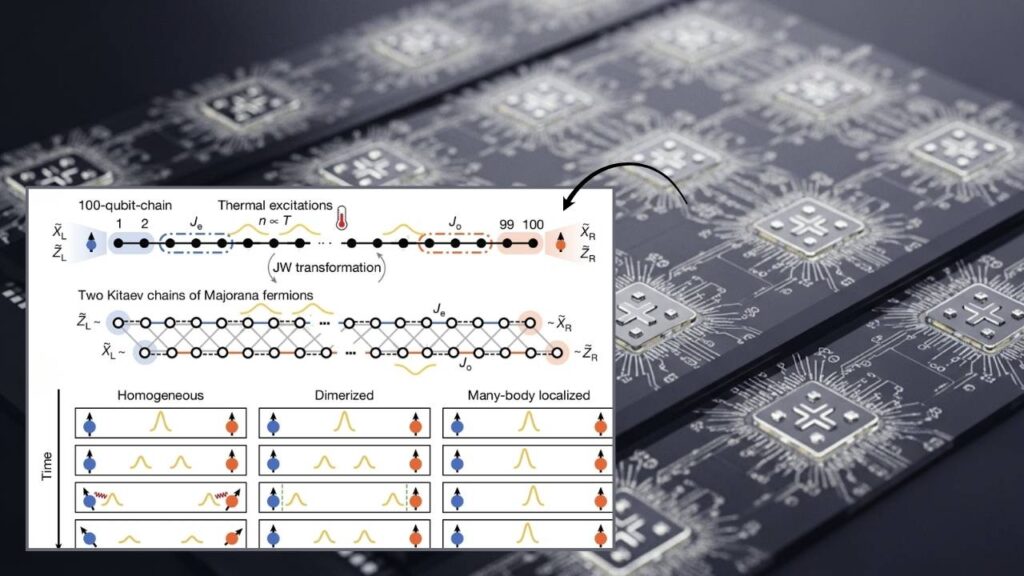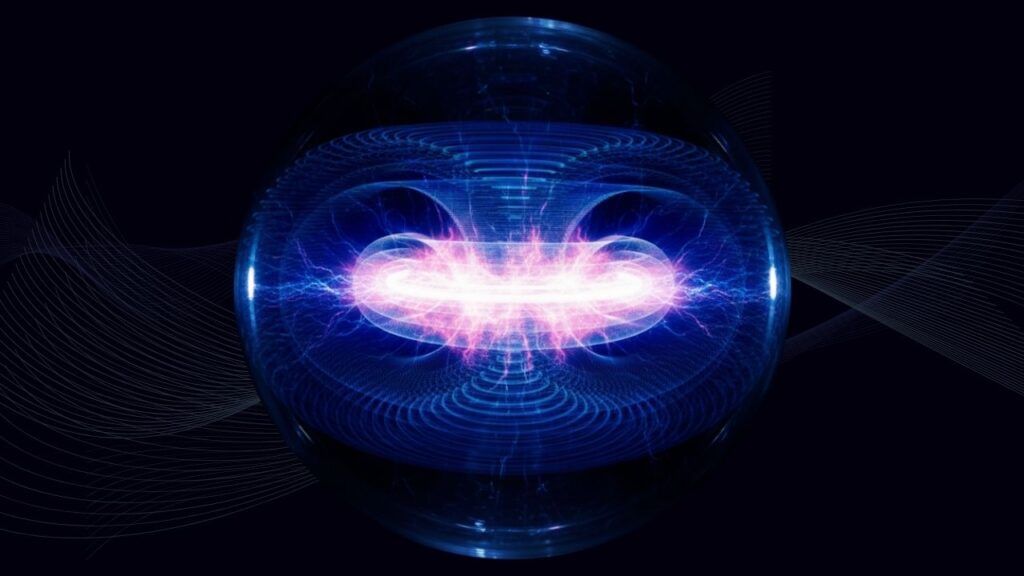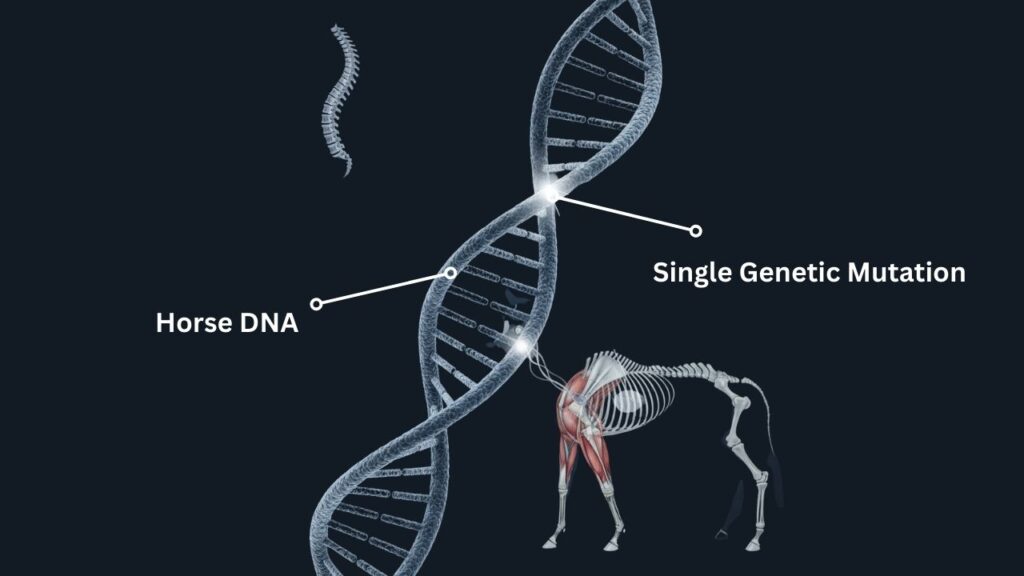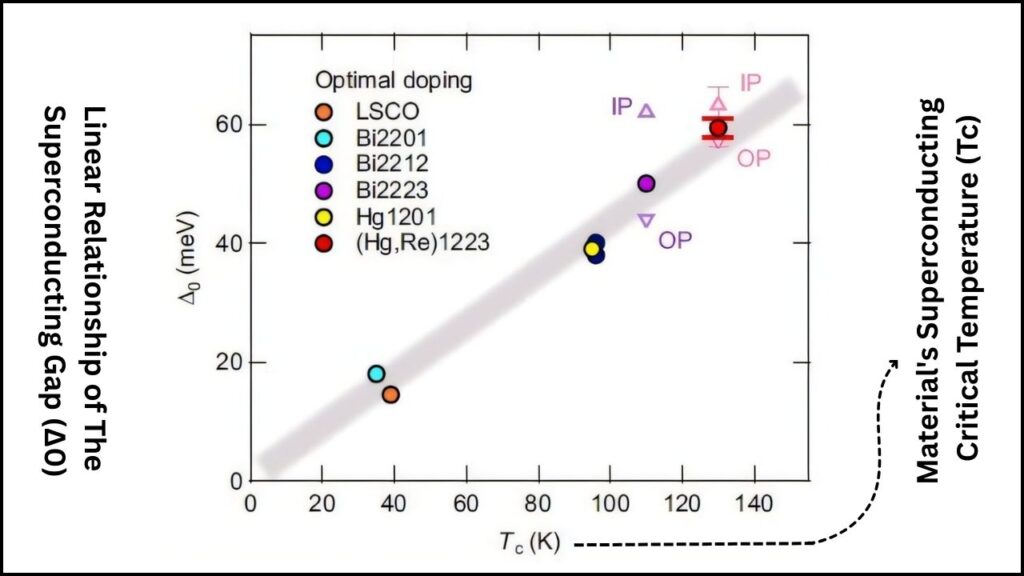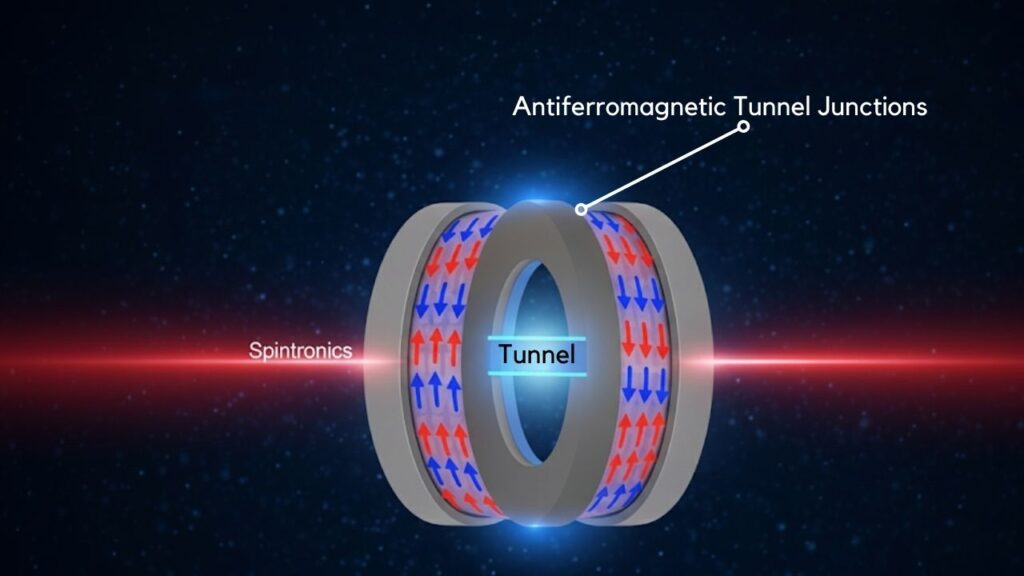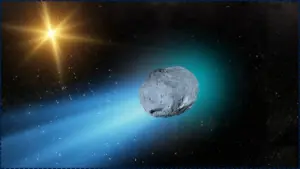The brightest Fast Radio Burst (FRB) ever detected, known as RBFLOAT (Radio Brightest FLash Of All Time), was recorded on March 16, 2025. This ultra-bright, millisecond-long flash of radio waves holds the promise to solve one of the most captivating mysteries in modern astronomy: the origin and nature of these powerful cosmic signals. The discovery not only marks a milestone in space exploration but also opens new avenues for studying the distant universe.
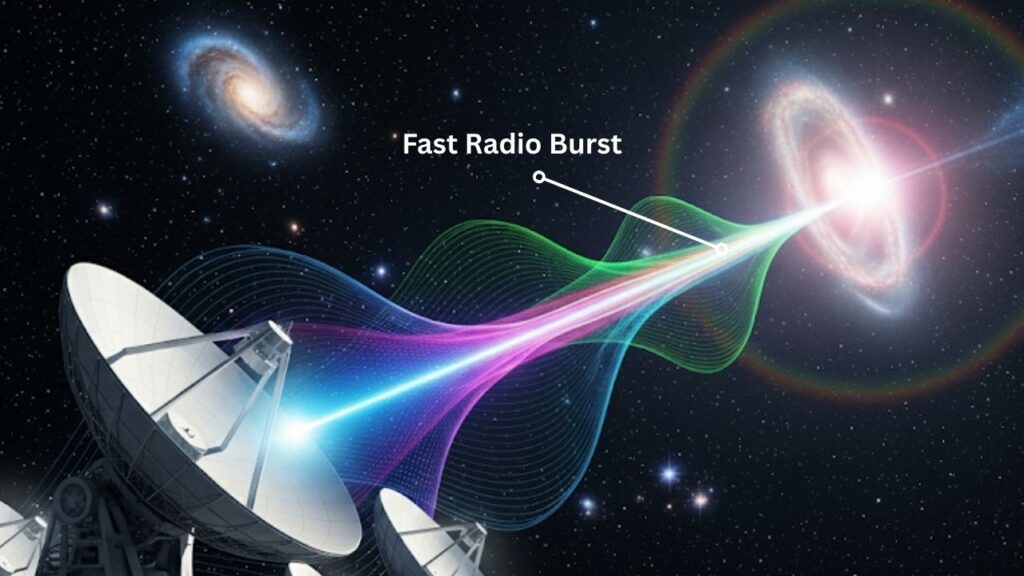
Fast Radio Bursts are brief but intense bursts of radio energy coming from beyond our Milky Way galaxy. Since their discovery in 2007, scientists have been puzzled about their cause, with theories ranging from exotic stellar phenomena to advanced alien technology. The recent detection of RBFLOAT, traced to the nearby galaxy NGC 4141, roughly 130 million light-years away, is providing new clues with unprecedented clarity.
Table of Contents
Brightest Fast Radio Burst Ever Detected May Finally Unlock a Cosmic Mystery
| Aspect | Details |
|---|---|
| Event | Brightest Fast Radio Burst (RBFLOAT) |
| Detection Date | March 16, 2025 |
| Source Galaxy | NGC 4141 (barred spiral galaxy) |
| Distance from Earth | ~130 million light years |
| Duration | About 1 millisecond |
| Energy Emitted | Equivalent to the Sun’s energy output over 4 days, compressed into milliseconds |
| Precise Location | Within a 45 light-year-wide region in the galaxy’s outskirts |
| Instrument | Canadian Hydrogen Intensity Mapping Experiment (CHIME) and Outriggers telescope array |
| Publication | The Astrophysical Journal Letters |
| Official Reference | CHIME Telescope Project |
The detection of the brightest Fast Radio Burst ever, RBFLOAT, represents a breakthrough in astronomy. Thanks to innovative technology like the CHIME Outriggers, scientists have for the first time localized an FRB with incredible precision, tracing it to a small region in a nearby galaxy. This discovery challenges previous assumptions, revealing that some of these bursts might be one-time events and providing a closer look into their mysterious origins.
As the world’s radio telescopes continue their watch of the night sky, the growing catalogue of FRB discoveries will bring us ever closer to unlocking the cosmic secrets behind these dazzling flashes of radio energy.
This discovery was made possible by the enhanced capabilities of CHIME’s newly added “Outriggers”—a network of smaller telescopes spread across North America that provide the sharp vision needed to pinpoint the FRB’s exact origin with extraordinary accuracy.
What Are Fast Radio Bursts?
Fast Radio Bursts are brief, intense flashes of radio waves usually lasting only a few milliseconds. Despite their short duration, they can emit as much energy as the Sun does in thousands of years. These bursts arrive unpredictably from different parts of the sky, and their origins have remained one of the greatest astronomical puzzles since their first recorded instance in 2007.
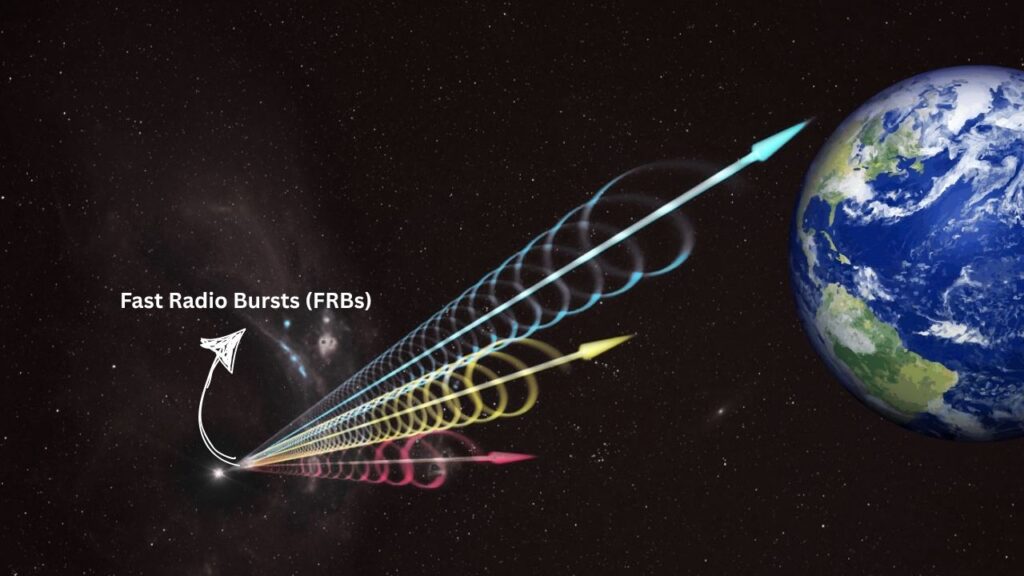
FRBs are detected using sensitive radio telescopes that scan the sky for fleeting signals. Detecting them is challenging because their signals can be drowned out by cosmic noise and they come without warning. Scientists divide FRBs into two types:
- Repeating FRBs that flash sporadically multiple times.
- Non-repeating FRBs which appear only once.
Understanding whether these bursts come from similar or distinct cosmic events is a key goal for researchers.
How RBFLOAT Was Detected and Why It Matters
The RBFLOAT burst was detected by CHIME, an advanced radio observatory in Canada designed to continuously monitor the northern sky. The addition of Outriggers—a series of smaller, distributed radio telescopes—allowed astronomers to achieve ultra-precise localization of the burst’s source, something that was previously extremely difficult.
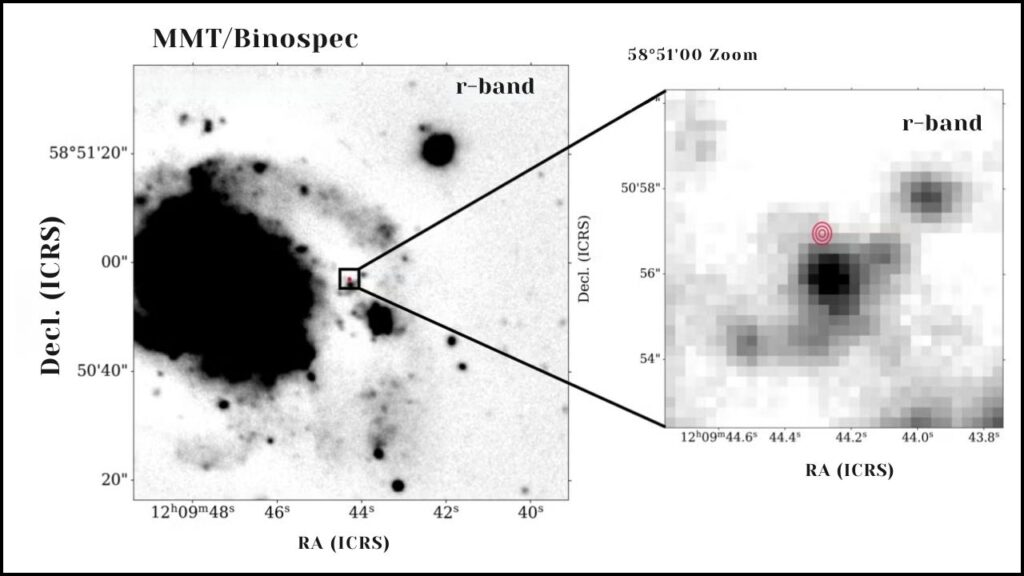
According to Amanda Cook, the lead scientist from McGill University, the localization was so precise it’s like “spotting a quarter from 60 miles away.” By triangulating signals from CHIME and the Outriggers, scientists narrowed down the burst to an area about 45 light-years wide within the spiral galaxy NGC 4141. This level of detail is revolutionary, giving scientists a better understanding of the environment producing these mysterious bursts.
Why is this important? For one, RBFLOAT is the brightest FRB on record, meaning it emitted more energy than all previously detected FRBs combined in just a tiny fraction of a second. This makes it the perfect laboratory for studying the physical conditions that generate such energy blasts.
Moreover, despite its brightness, RBFLOAT has not repeated—even during six years of CHIME surveillance data—which challenges the dominant assumption that all FRBs eventually repeat.
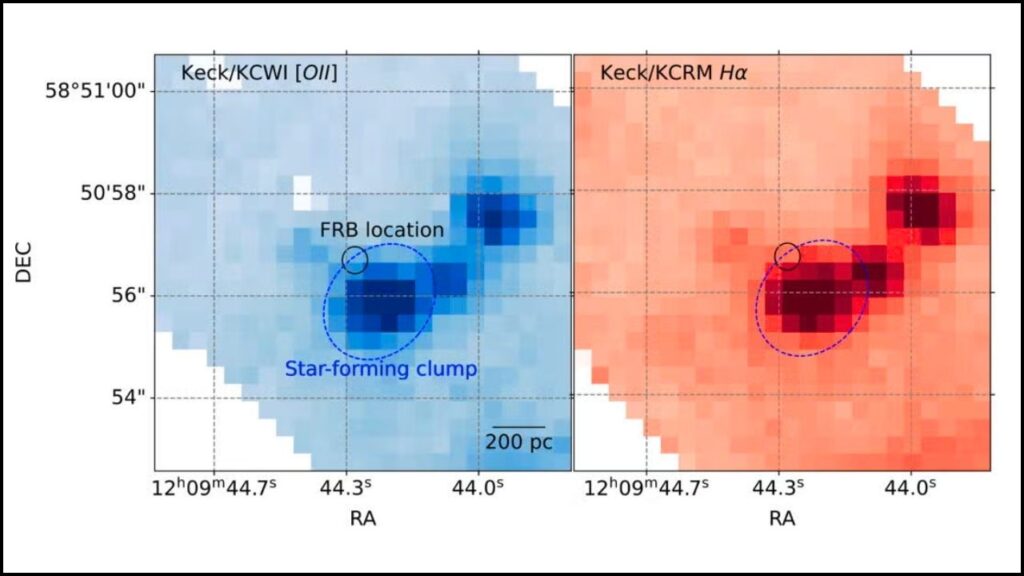
What Could Cause an FRB Like RBFLOAT?
The leading explanations involve magnetars—highly magnetized neutron stars left behind after massive stars explode as supernovae. Magnetars have intense magnetic fields capable of causing sudden releases of energy that mimic FRB signatures. The fact that RBFLOAT’s position is near (but not exactly within) an active star-forming region aligns with the idea of an older magnetar that has drifted from its birth location.
Other theories suggest:
- Collisions between compact objects (though less likely for repeaters).
- Interactions with supermassive black holes.
- Exotic physics scenarios, including cosmic strings or even advanced extraterrestrial technologies.
The precise localization will allow researchers to combine data from various telescopes, including optical and infrared observatories like the James Webb Space Telescope, to better characterize the burst’s environment and narrow down these possibilities.
A Step-by-Step Guide to Understanding FRB Research
1. Detection
Radio telescopes like CHIME scan the sky continuously, searching for transient radio flashes. When an FRB is detected, data like arrival time, duration, and frequency pattern are recorded.
2. Localization
Traditionally, localizing FRBs was challenging due to limited telescope resolution. The CHIME Outriggers now provide an extensive baseline across the continent, enabling pinpoint accuracy to identify the burst source to a small galaxy region.
3. Follow-Up Observations
Once localized, telescopes across various wavelengths observe the host galaxy to study its properties and environment. This helps link the FRB to potential astrophysical objects.
4. Data Analysis
Scientists analyze burst properties such as brightness, repetition rate, and polarization to infer the emission mechanisms and conditions near the source.
5. Theory Development
Using combined observational data and theoretical physics, researchers propose and test models to explain how FRBs are generated.
Practical Implications for Astronomy
The detection of the brightest FRB ever is a huge leap forward for:
- Astrophysics: Understanding extreme states of matter and energy.
- Cosmology: Using FRBs as probes to map intergalactic medium and magnetic fields.
- Technology: Advancements in radio telescope arrays and data processing.
Future upgrades to CHIME and other telescope arrays will enable detection and localization of hundreds of FRBs yearly, expanding our cosmic catalog and deepening our understanding of the universe’s energetic phenomena.
New Rapid-Response Protocol Catches Supernovae Within Hours – A Breakthrough in Space Science
Did Life Come From Outer Space? Scientists Say the Clues Are Adding Up
FAQs About Brightest Fast Radio Burst Ever Detected May Finally Unlock a Cosmic Mystery
Q1: What exactly causes Fast Radio Bursts?
A: The exact causes are still unknown, but magnetars are the leading candidates. Other possible causes include neutron star collisions, black hole interactions, or unknown cosmic sources.
Q2: How far away are most FRBs?
A: Most FRBs come from distant galaxies billions of light-years away. RBFLOAT is comparatively nearby at about 130 million light-years.
Q3: Are all FRBs repeating?
A: No, some repeat while others, like RBFLOAT, have so far only been detected once.
Q4: Why are FRBs important for science?
A: They help probe extreme physical conditions and can be tools to map the matter and magnetic fields between galaxies.
Q5: Can FRBs be signals from alien civilizations?
A: While some speculations exist, there is no evidence supporting this. The majority of scientists focus on natural astrophysical explanations.
